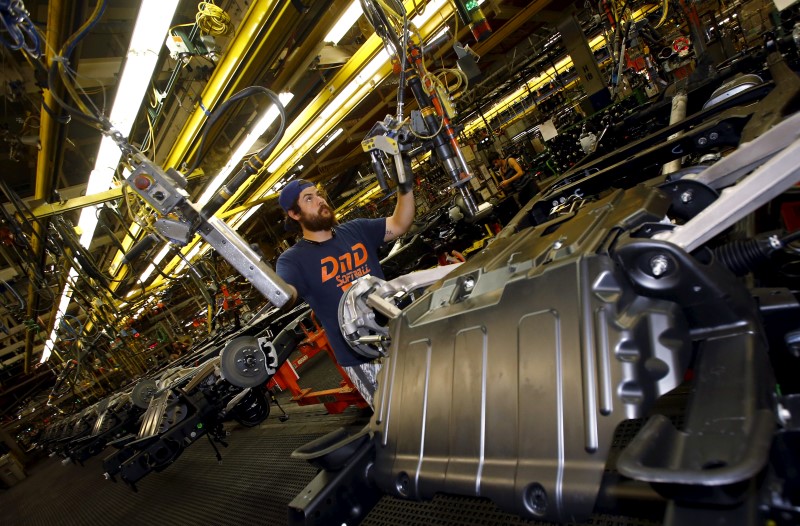By Lucia Mutikani
WASHINGTON (Reuters) - U.S. worker productivity fell for the third straight quarter in the spring this year, suggesting that corporate profits may continue to decline and wage growth may remain sluggish.
The Labor Department said on Tuesday that productivity, which measures hourly output per worker, dropped at a 0.5 percent annual rate in the April-June period, extending the longest decline since 1979. Productivity fell at an unrevised 0.6 percent rate in the first quarter.
In the second quarter, productivity decreased at a 0.4 percent rate compared to the same period last year, the fastest year-on-year pace of decline in three years.
Revisions to data going back to 2013 also confirmed the softening productivity trend, but strong employment gains have helped to raise output overall with U.S. payrolls growing by more than 500,000 jobs in June and July.
"The reason the economy has still been able to expand is because of labor input. Firms are hiring people at a reasonably healthy rate," said Joseph LaVorgna, chief economist at Deutsche Bank (DE:DBKGn) Securities in New York.
"However, we do not believe this can last, because strong hiring in the face of weak productivity necessarily implies a further deterioration in corporate profit margins."
After rising rapidly in the 1990s as computers made workers more efficient, productivity has fallen as companies have been reluctant to invest in new equipment in the past 18 months given the outlook for sluggish economic growth globally.
In the long run higher incomes and rising living standards depend on rising productivity though. The U.S. economy expanded at an annual pace of only 1.0 percent during the first six months of this year, roughly half the average of the past seven years.
U.S. stock prices were little changed at Tuesday's close, near record highs set recently, as investors shrugged off the productivity data, while U.S. Treasury yields edged lower as lower productivity suggests inflation may remain subdued.
SLUGGISH CORPORATE PROFITS
Corporate profits declined 5.3 percent in 2015 partly due to the lagging impact of a strong U.S. dollar and lower oil prices, before seeing an 8.1 percent rebound in the first quarter 2016 according to government data. Corporate profits data for the second quarter will be published later this month.
The Commerce Department reported last month that gross domestic product rose at a 1.2 percent annual rate in the second quarter following a 0.8 percent rise in the first quarter.
The estimate for second-quarter GDP growth could be revised slightly up after a separate report from the Commerce Department on Tuesday showed wholesale inventories increased 0.3 percent in June. The government had previously reported wholesale inventories as being unchanged in June.
DOUBTS ABOUT DATA
Productivity has increased at an annual rate of less than 1.0 percent in each of the last five years, suggesting the economy's potential rate of growth has declined, but some economists have questioned whether it is being accurately measured.
"Innovations are everywhere, in cancer research, iPhone apps, Olympic sports training, cloud computing - they are just not showing up in the GDP accounts," said Patrick Newport, a U.S. economist at IHS Global Insight in Lexington, Massachusetts.
"Are we just about running in place or is the radar that measures growth malfunctioning? It's both. Productivity growth is understated. Economists are just unsure by how much."
Unit labor costs, the price of labor per single unit of output, increased at a 2.0 percent pace in the second quarter. Second-quarter unit labor costs rose at a 2.1 percent rate compared to the same period of 2015.
First-quarter unit labor costs were revised to show a 0.2 percent rate of decrease, instead of the previously reported 4.5 percent increase.
Hourly compensation per hour rose at a 1.5 percent rate in the second quarter after falling at a 0.8 percent pace in the prior quarter.

"Labor compensation growth that outpaces productivity growth must either be passed through into faster price increases or squeeze profit margins," said John Ryding, chief economist at RDQ Economics in New York.